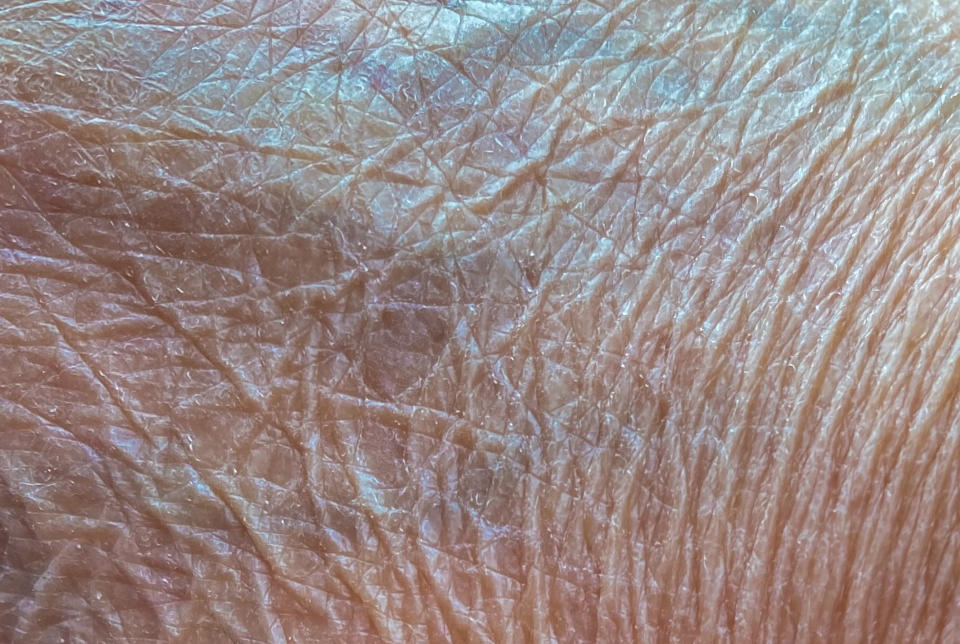So THAT'S Why The Skin On Your Neck Ages Faster Than Your Face
Have you ever looked in the mirror and wondered why the skin on your neck is beginning to sag while the skin on your face looks plump, smooth and firm? Well, there is a pretty straightforward reason for this. The skin on your neck is different from the skin on your face, and the two change at different rates as you get older.

Change is inevitable as you age, especially when it comes to the appearance of your skin. Usually, you’ll be able to see signs of aging on your neck and face first, and while your smile lines and 11 lines are signs of lots of laughs and happy moments, the distinctive change isn’t always a welcomed sight.
So, why does the skin on your neck seem to age faster than your face? We spoke with experts to understand the difference between the skin on your neck and face, what causes skin to sag, and potential treatment options.
The skin on your neck is thinner than the skin on your face.

The skin on your neck is thinner than the skin on your face, which is why you may experience a loss of elasticity on your neck. Your neck “has a different vascular and neural distribution and it is generally less protected than the face,” explained Dr. Doris Day, board-certified dermatologist.
The skin on your neck also “has fewer oil glands and less support from underlying muscles, which can contribute to quicker sagging,” said Dr. Ramtin Kassir, triple board-certified facial plastic and reconstructive surgeon. “Additionally, the neck is often more exposed to the sun and environmental damage, accelerating aging and loss of elasticity.”
Because of sun exposure, not applying enough sunscreen, and repetitive motion and bending of your neck, it’s common for people in their mid to later 30s to begin noticing sagging on their neck. “Which is why I tell all my younger patients that nothing looks more beautiful in your 50s than sun protection in your 20s,” Day added.
Neck sagging can start to show up as early as your late 20s to early 30s, though our experts say it’s more commonly noticed in your 40s and 50s. “This happens as part of the natural aging process, which leads to a decrease in collagen and elastin production over time,” dermatologist Dr. Marisa Garshick said. “As these proteins diminish, the skin loses its firmness and elasticity, which results in sagging.”
What is elasticity?

“Elasticity refers to the skin’s ability to stretch and then return to its original shape,” Kassir explained.
The quality of your skin’s elasticity is largely attributed to proteins like collagen and elastin, which are found in the dermis, just below the surface of the skin.
“Over time, several factors can cause a loss of elasticity, including aging, too much sun exposure, smoking, poor diet and dehydration,” Garshick said. “As we get older, the body produces less collagen and elastin, and these proteins can also be damaged by environmental factors, leading to skin that doesn’t snap back as it once did.”
Can you prevent a loss of elasticity?

It’s no secret that there are a ton of beauty products on the market that cater to tightening skin and preventing sagging. While creams, lotions and serums can help slow down the loss of elasticity in the skin, “their effectiveness depends on ingredients and how consistently someone is using them,” said Dr. Dendy Engelman, a board-certified dermatologic surgeon.
If someone would like to prevent the skin on their neck from sagging, there are several lifestyle habits, skin care products and treatments available. “It is important to regularly apply sunscreen to protect against sun damage, prioritize hydration, and use products with ingredients like retinoids, peptides and hyaluronic acid,” Engelman said.
While these products can’t entirely stop the loss of elasticity, “they can certainly help your skin by preventing the loss of collagen and elastin and improving its overall appearance,” Garshick said. “Ingredients like retinoids, peptides, hyaluronic acid and antioxidants are known to support collagen production and hydration, which can enhance elasticity and give your skin a more youthful look.”
It’s important to note that the benefits are usually subtle and can’t compare to what more advanced treatments or in-office procedures might achieve.
Treatment options to reverse a loss of elasticity after it’s already occurred.

If you’re interested in attempting to diminish the sagging of the skin on your neck and increase the elasticity in your skin, Garshick says there are a few options you could consider.
Laser treatments: Lasers, such as fractional CO2, can stimulate collagen production, tightening the skin and improving its elasticity.
Topical treatments: Regular use of skin care products containing ingredients like retinoids, peptides and hyaluronic acid can help improve the appearance of sagging skin over time.
Invasive procedures: For more pronounced sagging, surgical options like a neck lift might be considered. There are also nonsurgical alternatives, like radiofrequency treatments or ultrasound therapy, that can effectively tighten and lift the skin.
“Laser treatments are one of the top methods for improving skin elasticity and combating sagging. Lasers like fractional CO2 are particularly effective,” Garshick said. “They work by creating tiny injuries in the skin, which prompts the body to repair itself by producing more collagen and elastin. This process typically requires several treatment sessions, and while there might be some downtime, the results improve gradually over a few months as your skin naturally rebuilds itself and collagen is produced.”
She also recommends making a few lifestyle changes to help maintain the elasticity in your skin to prevent further sagging.

Sun protection: Applying sunscreen regularly can protect the skin from ultraviolet damage, which accelerates aging.
Hydration: Keeping the skin moisturized and staying well-hydrated by drinking water can help maintain skin elasticity.
Healthy lifestyle: Eating a balanced diet full of vitamins and antioxidants, avoiding smoking, and limiting alcohol can all contribute to healthier skin.
Exercise: Performing neck and facial exercises can help tone the muscles in the area, which may support the skin.
There’s nothing wrong with sagging skin and naturally losing elasticity on your neck’s skin. However, there’s also nothing wrong with wanting to tighten your skin and replenish its elasticity. While there are a handful of products and treatments available, from topical to invasive, it’s important to discuss these options, as well as any risks or side effects, with your health care provider.
This article originally appeared on HuffPost.

 Yahoo Lifestyle
Yahoo Lifestyle 
